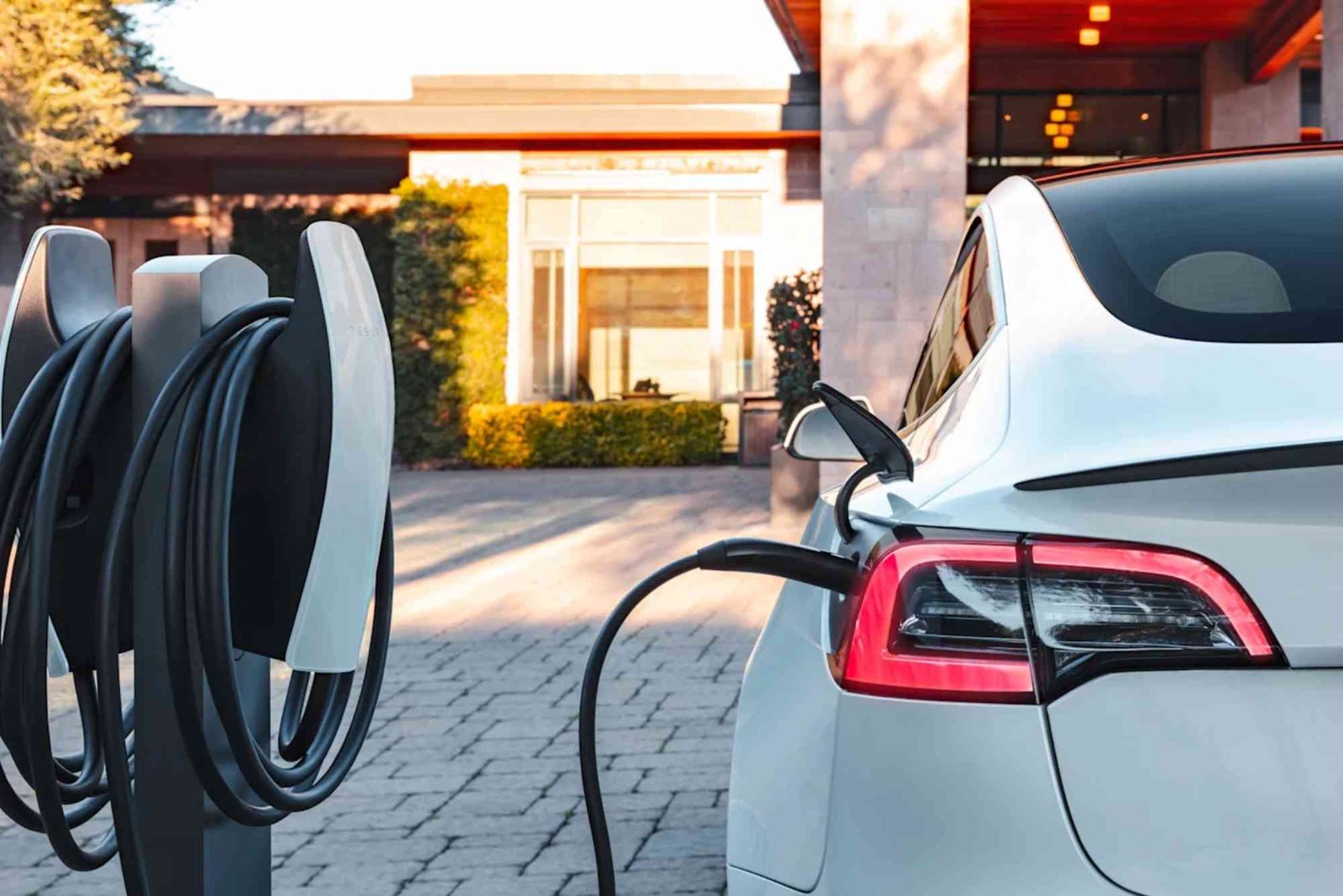Introduction
As electric vehicles (EVs) continue to revolutionize transportation, understanding how to charge electric car properly has become essential for every EV owner. Whether you’ve just purchased your first EV or you’re exploring the world of sustainable driving, knowing the right charging methods, equipment, and safety measures can make your experience smoother and more cost-effective. Charging an electric car might sound complicated at first, but with the right knowledge, it’s simple, efficient, and surprisingly convenient.
Understanding How to Charge an Electric Car
Electric cars are powered by rechargeable lithium-ion batteries, similar to those in laptops or smartphones but on a much larger scale. Charging these batteries replenishes the energy used during driving. The process depends on several factors — the type of charger, your vehicle’s capacity, and your location. The more efficiently you understand and manage these aspects, the better performance and battery life you’ll achieve.
When learning how to Charge Electric Car, the most important element is to know your charger types. Generally, there are three main levels of charging available to EV owners, each suited for different needs.
Level 1 Charging (Standard Home Outlet)
Level 1 charging uses a standard 120-volt household outlet. It’s the slowest option but requires no additional installation. Plug your EV’s charger directly into a regular outlet, and it will slowly restore battery power overnight. This method adds about 3 to 5 miles of range per hour, making it suitable for short daily commutes or overnight charging.
Level 2 Charging (Home or Public Station)
Level 2 charging is the most common choice for EV owners who want faster charging at home. It uses a 240-volt outlet, similar to what’s used for large home appliances. Installing a Level 2 charger at home can recharge most EVs fully within 4–8 hours. Many public charging stations also use this level, allowing you to top up your car while shopping, dining, or working.
DC Fast Charging (Public Networks)
DC fast chargers are designed for quick top-ups during long-distance travel. They deliver high-voltage direct current directly to the battery, charging up to 80% in as little as 30 minutes. However, frequent use of DC fast charging may cause gradual battery wear over time, so it’s best used for road trips or emergencies rather than daily charging.
How to Charge Electric Car at Home
Home charging is the most convenient and cost-effective method for most EV owners. To start, check whether your home electrical system supports a 240-volt connection. If not, you can hire a certified electrician to install a Level 2 charging unit. Once set up, charging at home is as easy as plugging in your car before bedtime and waking up to a fully charged battery.
To Learn How Charge Electric, it’s also essential to understand smart charging. Many modern chargers allow scheduling or remote monitoring through mobile apps. This lets you take advantage of off-peak electricity rates, helping reduce your energy costs and environmental footprint.
Charging Electric Car in Public
Public charging stations are becoming increasingly common across cities, workplaces, and highways. Most EV drivers rely on apps or maps that locate nearby chargers, displaying availability, price, and charging speed. When you arrive at a station, simply plug in your car, start the session using an app or card, and monitor progress on your dashboard or phone.
Many retail chains, hotels, and restaurants now offer complimentary charging for customers. For long road trips, plan your stops around fast-charging stations to ensure continuous power throughout your journey.
Safety Tips for Charging Electric Cars
While charging an EV is straightforward, following safety guidelines ensures smooth and trouble-free use. Always check that the charging cable and plug are free of dust or damage. Avoid using extension cords or low-quality adapters, as they can cause overheating. If you notice any burning smell or sparks, unplug immediately and inspect the cable or outlet.
Ensure your home charger is installed by a qualified electrician and grounded properly. If charging outdoors, keep cables away from standing water and extreme weather conditions. It’s also advisable to use surge protectors to safeguard the system during storms or power fluctuations.
Cost of Charging an Electric Car
The cost of charging depends on your electricity rate, charger type, and how often you drive. On average, charging at home costs significantly less than fueling a gas car. The average EV consumes about 30 kilowatt-hours (kWh) to travel 100 miles. If your electricity rate is $0.13 per kWh, that’s just around $4 for 100 miles — much cheaper than gasoline.
Public chargers, especially DC fast chargers, may cost more, typically between $0.30 and $0.60 per kWh. However, many businesses offer discounts or free charging for members or customers. Using time-based rates and smart scheduling can also help lower costs over time.
How Long Does It Take to Charge an Electric Car?
Charging time depends on your vehicle’s battery size and charger level. For example, a compact EV might fully charge in 4 hours using a Level 2 charger, while a large SUV could take up to 10 hours. DC fast chargers significantly reduce this time, delivering up to 200 miles of range in under 40 minutes.
It’s best to keep your battery charged between 20% and 80% for optimal health. Regularly charging to 100% can stress the battery, so reserve full charges for long trips only.
Practical Tips to Charge Electric Car Efficiently
Charging efficiency isn’t just about speed; it’s also about timing and maintenance. Here are several strategies to improve your experience:
Charge during off-peak hours when electricity rates are lower. Many utilities offer discounted nighttime rates for EV owners.
Keep your car in a shaded or cool area while charging. Extreme heat can slow charging speed and damage battery health.
Check your EV manufacturer’s recommended charging settings. Some models include eco-charging modes that protect battery life.
Avoid leaving your car plugged in for days once it’s fully charged. This prevents unnecessary strain on the battery.
Update your charger’s firmware and use certified accessories for best performance.
For detailed technical guidance, explore Charge Electric Car resources at www.caranddriver.com — an excellent platform that provides expert-backed EV information.
Common Myths About Charging Electric Cars
There are several misconceptions about EV charging that can confuse new owners. One common myth is that frequent charging damages the battery. In reality, modern EVs come with advanced battery management systems that prevent overcharging. Another myth suggests EV charging is slow and inconvenient. With today’s network of fast chargers and smart scheduling tools, charging fits easily into daily routines.
Many people also believe EVs require expensive maintenance or special wiring, but most homes can support Level 2 charging with minimal upgrades. As technology evolves, charging continues to become faster, safer, and more accessible.
Environmental Benefits of Charging Electric Cars
Charging your EV from renewable sources such as solar or wind power significantly reduces your carbon footprint. Even when charged from standard electricity grids, EVs emit far less CO₂ than gas-powered vehicles. By adopting responsible charging habits, you contribute directly to a cleaner, more sustainable future.
Moreover, advancements in battery recycling and renewable energy integration are making EV ownership more eco-friendly every year.
Future of EV Charging Technology
The future of electric car charging is promising and exciting. Wireless charging pads are already in development, allowing EVs to recharge automatically when parked. Ultra-fast chargers with higher voltage capacities can provide 300 miles of range in under 15 minutes. Smart grids and vehicle-to-home (V2H) systems will enable EVs to return excess energy to the grid during peak hours, creating an efficient circular energy ecosystem.
Governments and private companies worldwide are investing heavily in expanding charging infrastructure, ensuring that charging will soon be as quick and accessible as refueling a gas car.
Start Charging Smart Today
Charging an electric car is simpler and more rewarding than most people realize. By understanding the various charging levels, maintaining your equipment, and using energy wisely, you can enjoy maximum efficiency, safety, and cost savings. As technology advances, the process will only get faster and more convenient.
Ready to begin your electric journey? Visit Charge Electric Car for step-by-step insights and advanced charging strategies. Want to take it further? Learn How Charge Electric with our in-depth resources and expert-backed guides designed to make your EV experience seamless and sustainable.
FAQs
How long does it take to charge an electric car at home?
A typical EV takes 4–10 hours to charge fully at home using a Level 2 charger.
Is it safe to charge my EV overnight?
Yes, modern EV chargers include safety mechanisms that automatically stop charging once the battery is full.
Can I charge my electric car with a regular outlet?
Yes, but charging will be slower. Standard outlets (Level 1) add around 3–5 miles of range per hour.
Do I need to charge my car every day?
Not necessarily. Most EV owners charge every few days depending on their daily mileage.
Can bad weather affect charging?
Extreme temperatures can affect charging speed slightly, but most chargers and EVs are designed to handle a wide range of conditions safely.










